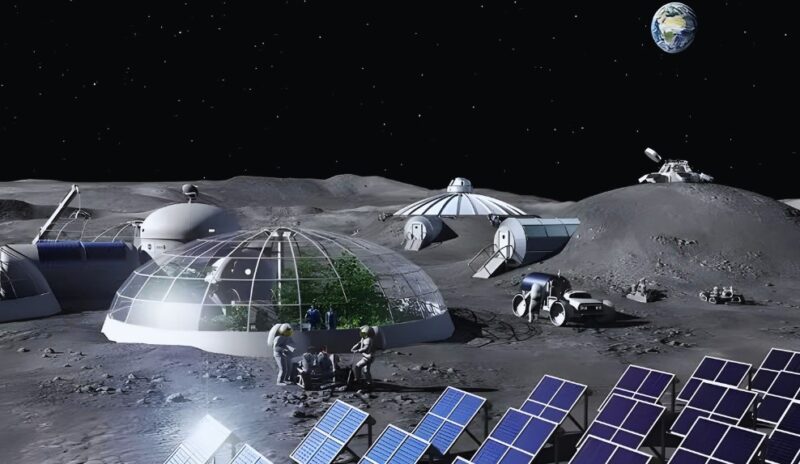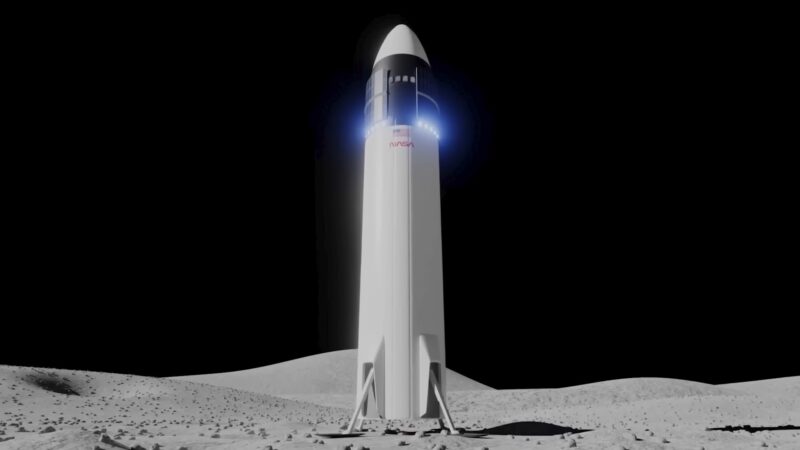NASA has set ambitious goals to expand human presence beyond Earth, with the Moon serving as the first crucial step in this journey. Throughout history, the Moon has fascinated humanity, and today it holds immense significance for space exploration and technological advancements.
NASA’s objective is to establish a sustainable human presence on the Moon, enabling the testing of new technologies, conducting groundbreaking scientific research, and showcasing innovative operational capabilities. Leading the charge is the Artemis program, named after Apollo’s twin sister in Greek mythology.
Artemis Base Camp: A Lunar Residence
Artemis Base Camp has a crucial role in NASA’s long-term lunar exploration strategy. It serves as a central hub, providing astronauts with a safe and functional living environment during both short and extended missions on the Moon’s surface.
At the heart of the base camp lies a sturdy lunar cabin, carefully designed to protect astronauts from harsh lunar conditions, including meteorite impacts and radiation. The primary purpose of the cabin is to ensure the crew’s safety throughout their stay on the lunar surface.
To facilitate scientific exploration, the base camp features an advanced lunar rover. Equipped with state-of-the-art navigation systems, the rover enables astronauts to travel longer distances and conduct detailed research across the diverse lunar terrain.
In addition to the cabin and rover, the base camp includes a mobile habitat. This adaptable unit can be relocated to different lunar sites, allowing for missions that assess the practicality of utilizing lunar resources.
Scientific Goals and Technological Advancements

NASA’s lunar missions have two primary objectives: expanding our understanding of the Moon and driving technological advancements. The Artemis program encompasses a range of scientific experiments with the potential to provide insights into the Moon, Earth, and the wider solar system.
A key scientific goal is gaining a deeper understanding of lunar geology. By studying the Moon’s composition, structure, and natural processes, scientists aim to uncover valuable information about the early history of Earth and other rocky planets. The Artemis missions will enable extensive mapping and analysis of the lunar surface, including unexplored regions.
Another important objective is the evaluation of water ice deposits on the Moon, particularly in the polar regions. These deposits are of immense interest due to their potential to support future human missions.
Construction Techniques for Lunar Habitats

In order to establish a sustainable human presence on the Moon, innovative construction techniques are essential. NASA’s plans for lunar habitats involve utilizing advanced technology and the Moon’s natural resources to create robust living spaces.
One promising technique involves 3D printing using lunar regolith, which is the loose material covering solid rock on the Moon’s surface. By using regolith as a building material, NASA can reduce the need to transport materials from Earth, resulting in cost savings and increased efficiency. Specially designed 3D printers for lunar conditions will construct habitat structures layer by layer directly on the lunar surface.
Another approach under consideration is the use of inflatable habitats. These structures can be transported in compact form and then expanded to full size once on the Moon. Inflatable habitats are lightweight yet strong, capable of withstanding the Moon’s extreme temperature variations and providing effective radiation shielding.
In addition, NASA is exploring the integration of energy-efficient systems into lunar habitats. This includes foldable solar panels that can generate electricity once deployed on the Moon. Recycling systems for water and air within the habitats are also being developed to reduce reliance on Earth-based supplies, which will be crucial for long-term missions.
Timeline and Phases of the Artemis Program

The Artemis program is structured in progressive phases, each designed to build on the successes and lessons of the previous ones. The goal is to establish a sustainable presence on the Moon by the end of the decade.
- Phase 1: Artemis I was an uncrewed test flight that successfully demonstrated the capabilities of NASA’s Space Launch System (SLS) and Orion spacecraft around the Moon. This mission laid the foundation for subsequent missions by testing critical systems and technologies.
- Phase 2: Artemis II is planned as the first crewed mission and will orbit the Moon. This mission aims to test all the human-rated systems with astronauts aboard, ensuring that everything operates as expected in the lunar environment.
- Phase 3: Artemis III aims to land astronauts on the Moon’s South Pole, a region never visited by humans. This mission will involve collecting samples and conducting a series of experiments to test new technologies directly on the lunar surface.
- Beyond Artemis III, the program envisions establishing Artemis Base Camp, which will serve as a long-term hub for scientific research, technological testing, and exploration. This camp will be crucial for testing the technologies and systems needed for prolonged human stays on the Moon and for future missions to Mars.
The Artemis program also includes plans for the Gateway, a lunar orbiting outpost that will serve as a multi-purpose staging point for lunar landings, research, and missions deeper into space. The Gateway will support longer lunar orbital missions and provide astronauts with access to the lunar surface.
Conclusion
The Artemis program, with its goal of establishing a sustainable human presence on the Moon, marks a significant milestone in space exploration. Its impact is expected to extend beyond lunar missions, shaping the future of interplanetary exploration and paving the way for ambitious endeavors to Mars and beyond.









